If you’ve visited a frozen yogurt shop, Boba is the edible gel beads you kids go crazy for or the beads in drinks like “Bubble Tea” and we are going to show you how to make popping boba at home. You can make Boba at home with simple ingredients and call it a fun science experiment. The cooking technique in cooking is actually called molecular gastronomy. It’s food science that investigates the chemical and physical transformation of ingredients that occur in cooking.
Typically, Boba is made with a mixture of fruit juice (without calcium) mixed with powdered sodium alginate, then dripped in a cold mixture of calcium chloride.
For this recipe, we are going to use ingredients that you can find easily at a grocery store: vegetable oil, Gatorade, and agar powder (found in the Asian food section).
We also have Balsamic Popping Boba instructions to show boba isn’t just for a bubble tea drink!
Read this step-by-step guide on how to make Cold Oil Boba Beads with fruit juice.

Bursting Boba Beads
Experience the burst of flavor with this step-by-step guide on creating Cold Oil Boba Beads infused with the zesty goodness of Gatorade.
Preparation Time: 40 minutes (plus cooling time)
Yields: Approximately 1 cup of Cold Oil Popping Boba
Ingredients:
1 cup vegetable oil
1 cup Gatorade
1/2 teaspoon Agar Powder
How to Make Boba:
Pour 1 cup vegetable oil into a glass and place in the freezer for 40 minutes
In a medium saucepan, combine Gatorade and agar powder.
Over medium-high heat, bring Gatorade and agar powder mixture to a boil while stirring.
Pour Gatorade mixtures into a heatproof bowl and cool for 20 minutes.
Take the oil out of the freezer.
Fill a dropper with the Gatorade mixture and squirt into the oil.
As soon as the juice hits, it will form a ball and sink.
Using a slotted spoon, transfer the beads to a bowl of cold water to rinse.
Drain beans in a mesh strainer.
Eat the beads, use them as an ice cream topping, or stir them into iced tea.
We also have Balsamic Popping Boba instructions to show boba isn’t just for a bubble tea drink!
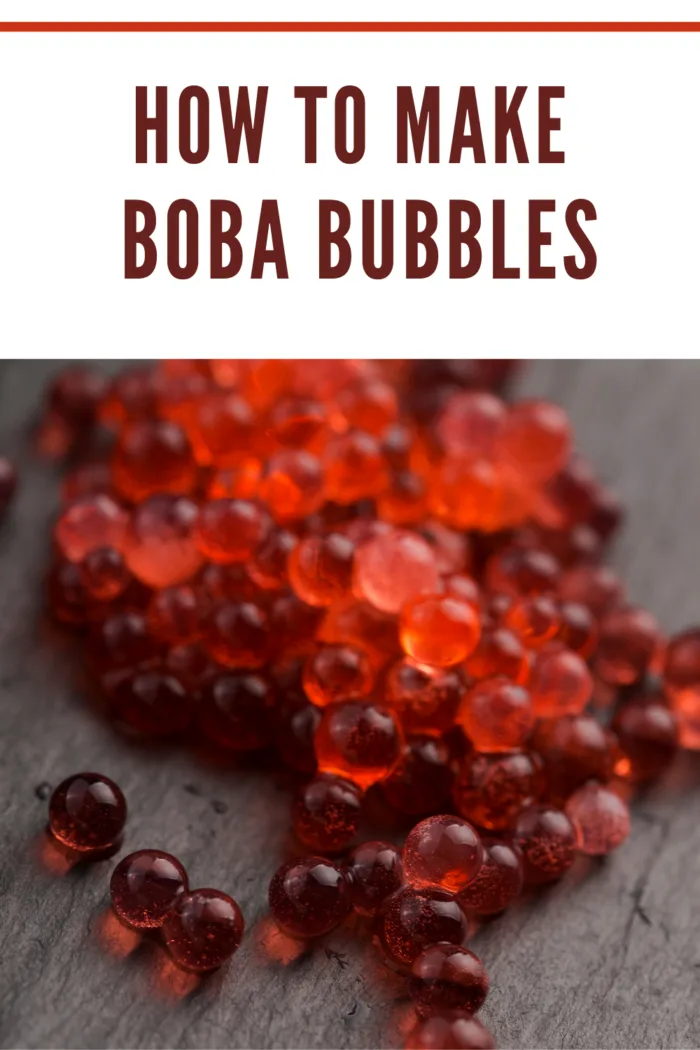
How Does It work?
The formation of the beads uses agar, a natural gelling agent made from algae, that is dissolved into the warm liquid.
This makes the altar molecules form a web that solidifies as it cools.
When the mixture hits the old oil, the molecules on the outside of the drop chill so quickly that they trap the liquid remaining inside.
Oil and Gatorade cannot combine so the drops form spheres instead of dispersing into the oil.
We also share a recipe for Popping Boba Beads using Sodium Alginate, which offers a more varied flavor medium, as explained below.
Learn How to Make Popping Boba for Teas and Milk:
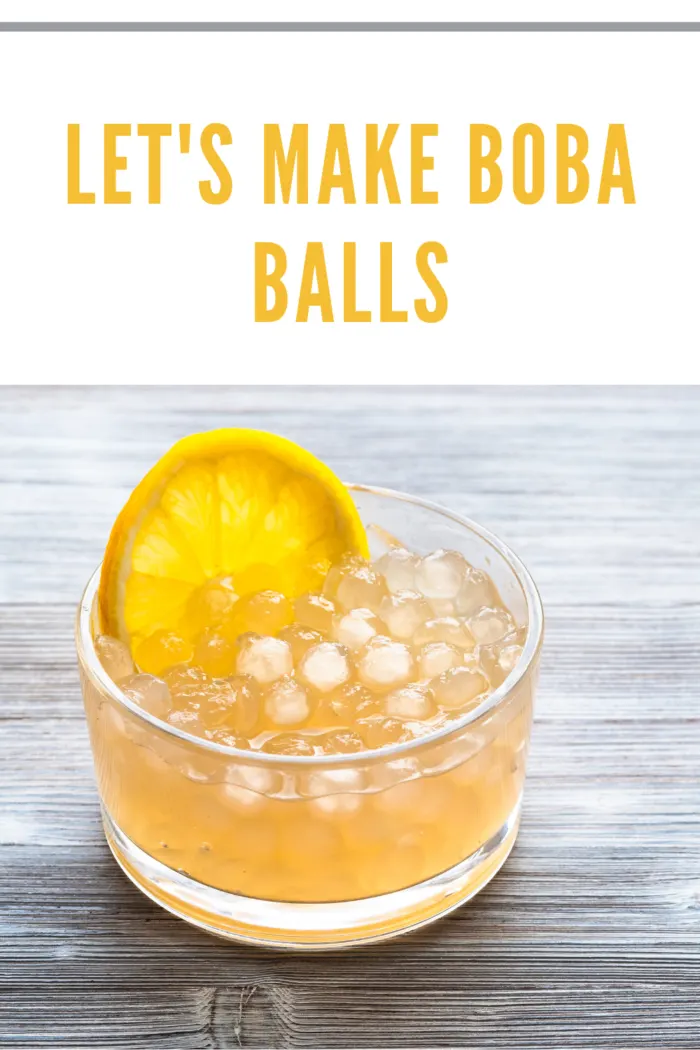
Expert Tips for Perfect Popping Boba with Gatorade
Creating popping boba at home with Gatorade is a thrilling culinary adventure. To ensure your success, here are some expert tips to elevate your popping boba game:
- Flavorful Gatorade Selection:
- Choose a Gatorade flavor that both tickles your taste buds and complements the beverage or dessert you plan to enhance with popping boba. Feel free to embark on a flavor exploration to discover your ultimate pairing.
- Balance the Gatorade-to-Sodium Alginate Ratio:
- The ratio of Gatorade to sodium alginate plays a pivotal role in determining the texture and consistency of your popping boba. Begin with a 1:1 ratio (equal parts Gatorade and sodium alginate) and fine-tune as needed. If your mixture is too thick, a touch of Gatorade can be added to achieve the desired consistency. Conversely, if it’s too thin, a slight increase in sodium alginate will do the trick.
- Embrace Cold Oil:
- For the spherification process, it’s imperative to work with chilled oil. Cold oil swiftly solidifies the outer layer of your popping boba, imparting that signature texture. You can chill the oil by refrigerating it or placing it in the freezer for a brief period. To ensure optimal results, consider leaving the oil in the freezer for 1-2 hours.
- Precision in Dropping:
- Use a dropper or syringe to release small, controlled portions of the Gatorade-sodium alginate mixture into the cold oil. This meticulous approach ensures uniform-sized popping boba spheres. Keep in mind that the choice of dropping distance above the water can impact the final shape. Lowering the dropper closer to the water surface yields more uniform shapes due to reduced impact force.
- Gentle Stirring of Oil:
- While your popping boba gracefully resides in the cold oil, employ gentle stirring motions to prevent them from congregating and sticking together. This helps maintain even solidification and spherical perfection.
- Rinse for Precision:
- Once your popping boba emerges from the cold oil, give them a refreshing rinse under cold water. This step effectively eliminates excess oil, contributing to a superior final texture while preventing undesirable oiliness.
- Serve Fresh for Optimal Enjoyment:
- Popping boba is at its prime when savored fresh. Aim to incorporate them into your creations within a few hours of preparation to relish their ideal texture and flavor.
- Unleash Your Creative Spirit:
- Don’t shy away from experimenting with various Gatorade flavors, colors, and imaginative combinations. Let your creativity flow as you craft exciting variations of popping boba. Embrace the joy of the culinary journey.
Remember, culinary mastery takes practice, so don’t be disheartened if your initial attempt doesn’t match your vision. With perseverance and these pro tips as your compass, you’ll soon become a popping boba maestro, enhancing your beverages and desserts with bursts of flavor and fun using Gatorade. Happy experimenting!
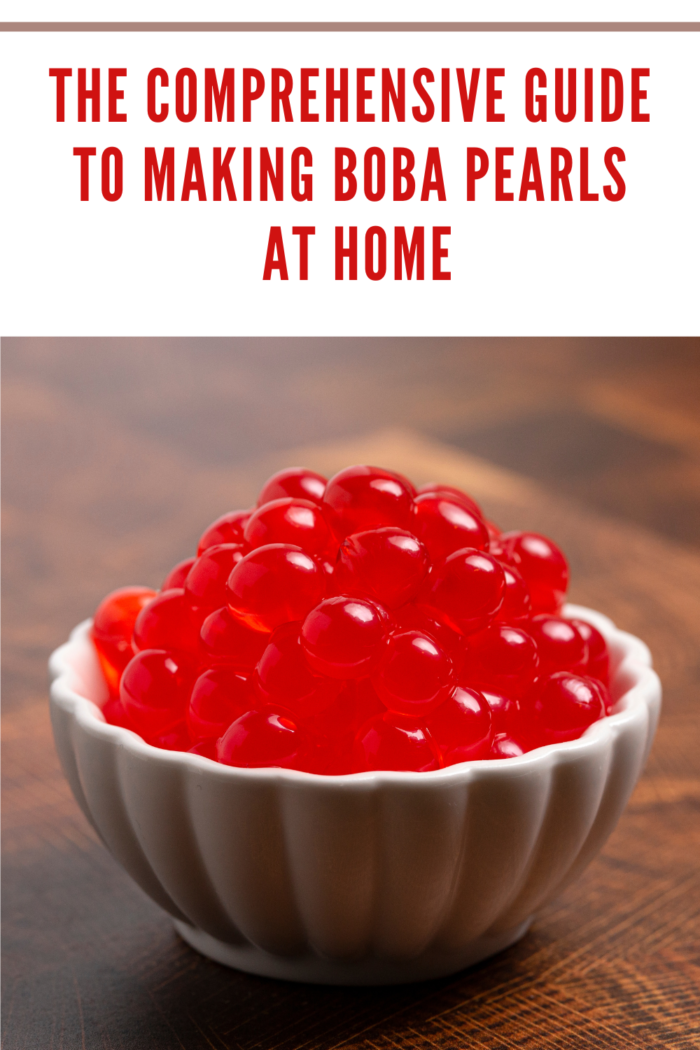
The Legends and Lore of Boba’s Origins
Boba, or bubble tea, traces its roots back to Taiwan. Known as “zhenzhu naicha” (珍珠奶茶) in Taiwan, it’s also referred to as “Q” or “QQ” in some tea shops.
One legend credits the creation of Boba to the Hanlin Tea Room, a renowned tea shop in Tainan. Another intriguing tale points to Lin Hsiu-hui, an employee of Chun Shui Tang, as the innovative mind behind this beloved beverage.
The Legend of Lin Hsui-Hui: A Mythical Origin Story
The Legend of Lin Hsui-Hui, a cherished narrative in Taiwan, weaves the tale of a young woman named Lin Hsui-Hui, who resided in Taichung during the 1940s. Renowned for her delicious tea, Lin Hsui-Hui accidentally dropped tapioca balls into a pot of tea one fateful day. Rather than discard the tea, she served it to her customers, who embraced this newfound creation with enthusiasm. Thus, “bubble tea” or boba tea was born.
While the authenticity of this legend is debated, it remains a beloved part of Taiwanese folklore, celebrating the ingenuity of the Taiwanese people.
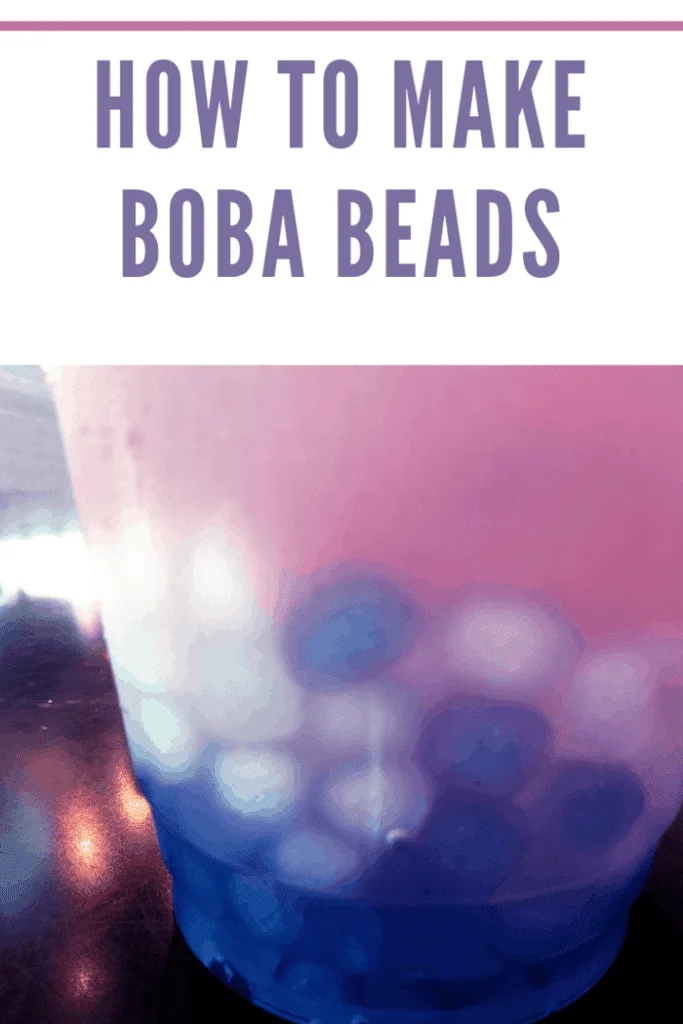
The Birth of the Name “Boba”
Amid debates about its origin, there’s unanimous agreement about the name “boba.” This distinctive moniker is derived from the small, chewy tapioca balls that are integral to the beverage’s identity.
In Taiwanese Hokkien, the language spoken by many in Taiwan, “boba” colloquially refers to these tapioca pearls. Initially known as “pearl milk tea” or “tapioca milk tea” due to the tapioca balls, it evolved into “boba tea” or “bubble tea” as its popularity soared, alluding to the bubbles formed when the drink is shaken or blended.
Fun Fact: Amy Yip, the “Boba” of the 1980s
In an intriguing twist, Amy Yip, a Hong Kong sex symbol in the 1980s, is affectionately known as “Boba.” This Chinese slang term playfully acknowledges her famous assets.
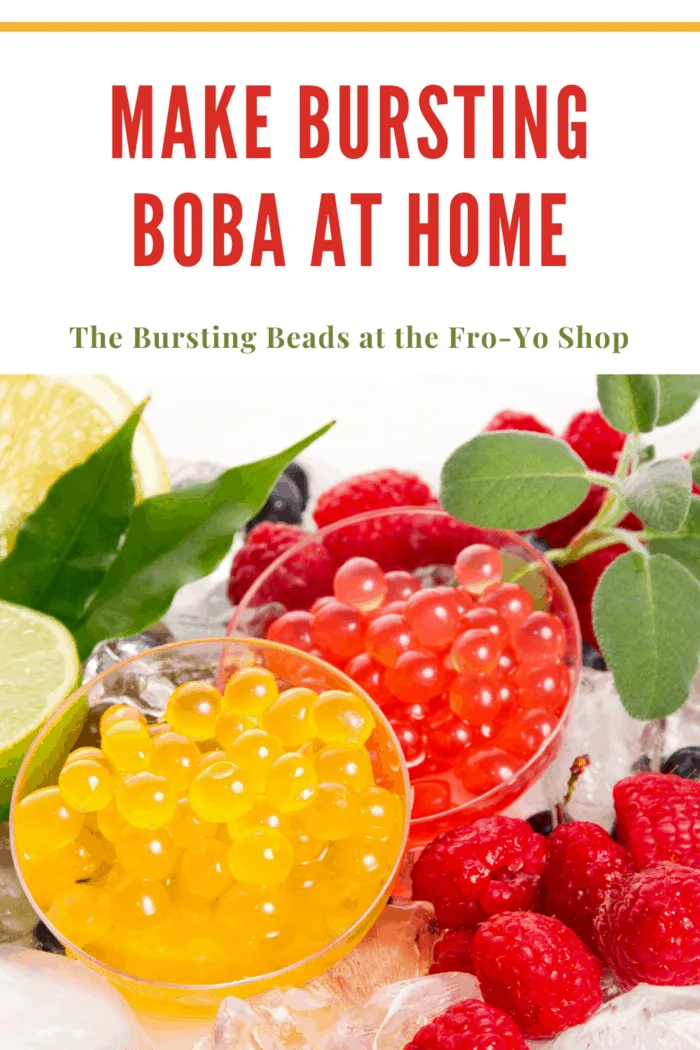
Spherification: The Culinary Art of Boba Creation
Spherification, a hallmark technique of modernist cuisine, offers a mesmerizing way to craft small, flavorful spheres of liquid that burst delightfully in your mouth. Within the realm of spherification, two main types stand out:
- Basic Spherification
In this technique, a mixture of sodium alginate and a liquid ingredient, such as fruit juice or flavored water, is skillfully prepared. This mixture is then gently introduced into a solution of calcium chloride. The magic happens as the sodium alginate reacts with the calcium chloride, forming a thin, gel-like membrane around the liquid, resulting in delightful round spheres.
- Reverse Spherification
Contrasting with basic spherification, reverse spherification flips the script. Here, sodium alginate is added to the calcium solution, while the liquid ingredient joins the sodium alginate mixture. As the liquid interacts with the calcium solution, it takes on the form of small spheres. This technique yields a thicker membrane, ensuring a stable, flavorful sphere.
Both techniques empower chefs and home cooks alike to create visually stunning and innovative dishes, ranging from caviar-like spheres to cocktails adorned with suspended fruit juice spheres.
Cold Oil Spherification and Sodium Alginate Spherification
For our primary recipe, we’ll utilize easily accessible ingredients: vegetable oil, Gatorade, and agar powder (readily found in the Asian food section or online). Additionally, we’ll share a tantalizing recipe for Popping Boba Beads using Sodium Alginate, offering a diverse and flavorful twist to your culinary repertoire.
We also share a recipe for Popping Boba Beads using Sodium Alginate, which offers a more varied flavor medium, as explained below.
Now that you’re well-versed in the fascinating world of popping boba, let’s embark on a culinary adventure and bring these delectable treats to life right in your kitchen. Get ready for an explosion of flavor and creativity!
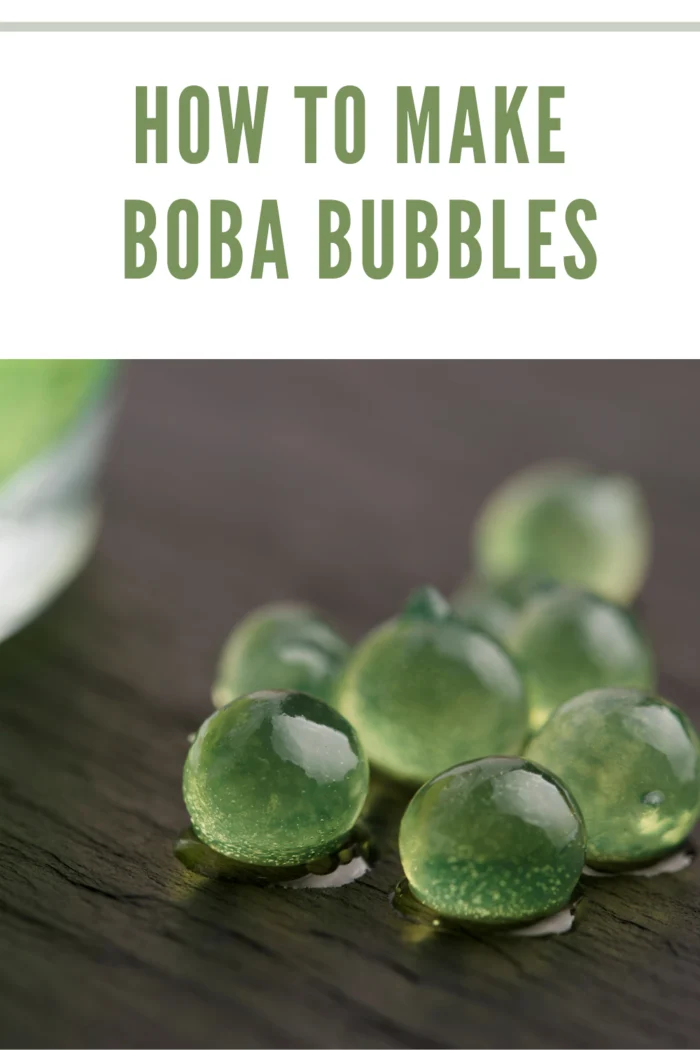
Unlocking the Cold Oil Boba Beads Method: A Molecular Gastronomy Marvel
The Cold Oil Boba Beads Method, also known as the “molecular gastronomy” or “reverse spherification” technique, is a remarkable and unconventional approach to crafting boba beads. It veers away from the conventional hot water method and instead employs cold oil to conjure gelatinous spheres that promise a distinctive texture and mouthfeel.
Ingredients and Formation
This unique method involves the creation of boba pearls by gently dropping a concoction of tapioca starch and flavor-enhancing agents into a bowl of chilled oil. Within this innovative process, the mixture takes shape, transforming into small, irregularly shaped balls that undergo further refinement.
Crafting the Pearls
To embark on this intriguing culinary journey, you’ll start by blending tapioca starch with water and your choice of flavoring agents, which could range from fruit juices to powdered teas. As the ingredients meld together, they gradually form a dense, pliable dough with tantalizing potential.
The Sphere Formation
The next step in this creative process is to craft the small pearls themselves. Picture rolling the dough into diminutive balls, each roughly the size of a pea. These balls are key to the unique texture and appearance that sets Cold Oil Boba Beads apart.
The Chilled Immersion
Now comes the fascinating part. The prepared boba balls are gently submerged into a vessel of cold oil, whether it’s trusty vegetable oil or exotic coconut oil. The low temperature of the oil has a magical effect, causing the balls to solidify and take on a firm consistency. This metamorphosis in the chilled embrace of the oil is what gives Cold Oil Boba Beads their distinctive character, setting them apart from their traditional counterparts.
Final Touch: Boiling and Sweetening
Once the boba balls are gracefully extracted from their cold oil bath, they undergo a brief yet crucial transformation. Boiled in water and graced with a touch of sweetness, typically from sugar or honey, these pearls emerge with a delicate balance of flavors that harmonize beautifully with various beverages.
A Unique Twist on Tradition
The end result? Boba pearls like no other, ready to infuse your drinks, whether it’s a comforting milk tea or a vibrant fruit smoothie, with an innovative twist on the traditional boba experience. While the Cold Oil Boba Beads Method may not be as prevalent as the conventional approach, it has garnered a devoted following among boba enthusiasts who relish the extraordinary texture and flavor it brings to their beloved drinks.
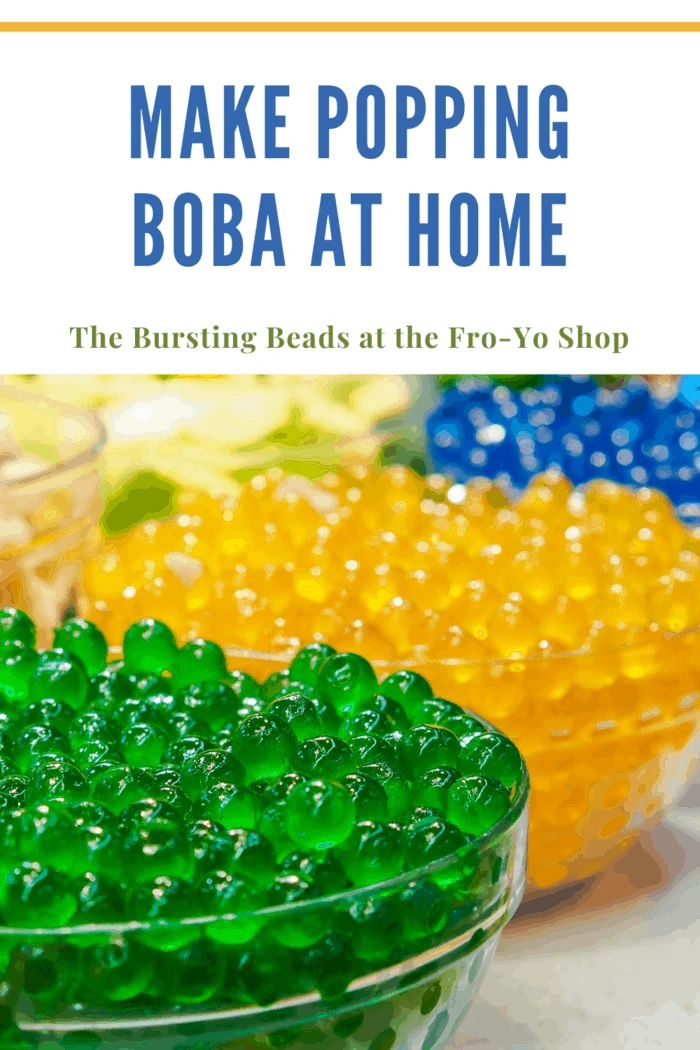
Final Thoughts:
Making popping boba at home is a delightful and creative culinary adventure. Whether you choose to use Gatorade, fruit juice, or other flavorful liquids with sodium alginate, the process of creating these gelatinous spheres with a burst of flavor is both fascinating and rewarding.
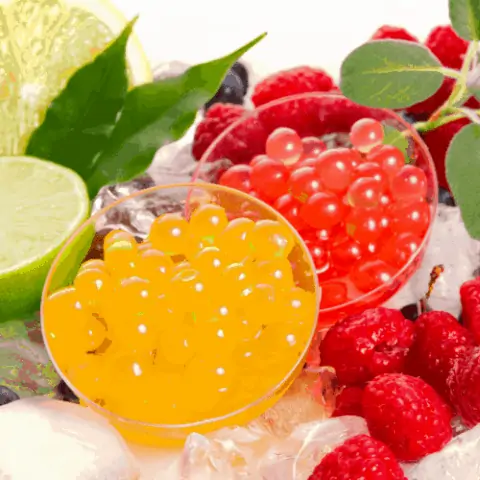
Popping Boba Recipe
Boba is the edible gel beads you kids go crazy for or the beads in drinks like "Bubble Tea" Here's how to make popping boba at home.
Ingredients
- 1 cup vegetable oil
- 1 cup Gatorade
- 1/2 teaspoon Agar Powder
Instructions
Pour 1 cup vegetable oil into a glass and place in freezer for 40-minutes
IN a medium saucepan, combine Gatorade and agar powder.
Over medium-high heat, bring Gatorade and agar powder mixture to a boil, while stirring.
Pour Gatorade mixtures into a heatproof bowl and cool for 20-minutes.
Take the oil out of the freezer.
Fill a dropper with the Gatorade mixture and squirt into the oil.
As soon as the juice hits, it will form a ball and sink.
Using a slotted spoon, transfer the beads to a bowl of cold water to rinse.
Drain beans in a mesh strainer.
Eat the beads or use as an ice cream topping or stir into iced tea.
Recommended Products
-
 INSPIRE FOOD Popping Boba Pearls for Bubble Tea - 1 lb | Strawberry | Bursting Pearls Bubble | Real Fruit Juice For Shakes, Desserts, Smoothies | 100% Vegan & Glutenfree
INSPIRE FOOD Popping Boba Pearls for Bubble Tea - 1 lb | Strawberry | Bursting Pearls Bubble | Real Fruit Juice For Shakes, Desserts, Smoothies | 100% Vegan & Glutenfree -
![[Angled Tips] 8 Pcs Reusable Boba Straws & Smoothie Straws - Multi Colors Jumbo Wide Reusable Straws, BPA FREE Food-Grade Plastic Straws for Bubble Tea(Tapioca, Boba Pearls), Milkshakes with 2 Brushes](https://m.media-amazon.com/images/I/51H-u7N5M1L._SL500_.jpg) [Angled Tips] 8 Pcs Reusable Boba Straws & Smoothie Straws - Multi Colors Jumbo Wide Reusable Straws, BPA FREE Food-Grade Plastic Straws for Bubble Tea(Tapioca, Boba Pearls), Milkshakes with 2 Brushes
[Angled Tips] 8 Pcs Reusable Boba Straws & Smoothie Straws - Multi Colors Jumbo Wide Reusable Straws, BPA FREE Food-Grade Plastic Straws for Bubble Tea(Tapioca, Boba Pearls), Milkshakes with 2 Brushes -
 Pure Calcium Lactate ⊘ Non-GMO Vegan OU Kosher Certified - 50g/2oz
Pure Calcium Lactate ⊘ Non-GMO Vegan OU Kosher Certified - 50g/2oz -
 Pure Sodium Alginate (Molecular Gastronomy) ⊘ Non-GMO ☮ Vegan ✡ OU Kosher Certified - 50g/2oz
Pure Sodium Alginate (Molecular Gastronomy) ⊘ Non-GMO ☮ Vegan ✡ OU Kosher Certified - 50g/2oz -
 Faburo 30pcs Clear Plastic Test Tubes with Cork Stoppers, 16x100mm 10ml Small Plastic Bottles with Corks, Good Seal for Candy Storage, Bath Salt, Scientific Experiments and Plant Propagation
Faburo 30pcs Clear Plastic Test Tubes with Cork Stoppers, 16x100mm 10ml Small Plastic Bottles with Corks, Good Seal for Candy Storage, Bath Salt, Scientific Experiments and Plant Propagation -
 Agar Agar Powder 8oz - Vegan Unflavored Gelatin Substitute - For Use in Baking Jello Sheets, DIY Petri Dishes, as a Thickener and Gummy Candy Mixes – Nutrient Rich, Keto Friendly and Gluten Free by Fit Lane Nutrition
Agar Agar Powder 8oz - Vegan Unflavored Gelatin Substitute - For Use in Baking Jello Sheets, DIY Petri Dishes, as a Thickener and Gummy Candy Mixes – Nutrient Rich, Keto Friendly and Gluten Free by Fit Lane Nutrition -
 NOW Foods, Agar Pure Powder, Vegetarian Substitute for Gelatin, Gluten-free, Kosher, 2-Ounce
NOW Foods, Agar Pure Powder, Vegetarian Substitute for Gelatin, Gluten-free, Kosher, 2-Ounce -
![Spherification Kit [Molecular Gastronomy] ⊘ Non-GMO Vegan OU Kosher Certified Ingredients](https://m.media-amazon.com/images/I/51ccHbEPdPL._SL500_.jpg) Spherification Kit [Molecular Gastronomy] ⊘ Non-GMO Vegan OU Kosher Certified Ingredients
Spherification Kit [Molecular Gastronomy] ⊘ Non-GMO Vegan OU Kosher Certified Ingredients -
 Spherification Spoon
Spherification Spoon -
![Perfect Caviar Maker [Molecular Gastronomy]](https://m.media-amazon.com/images/I/31pMY0oZV+L._SL500_.jpg) Perfect Caviar Maker [Molecular Gastronomy]
Perfect Caviar Maker [Molecular Gastronomy] -
 Sodium Alginate + Calcium Lactate Value Pack ⊘ Non-GMO Vegan OU Kosher Certified - 100g/4oz (Bundle with 2 Items)
Sodium Alginate + Calcium Lactate Value Pack ⊘ Non-GMO Vegan OU Kosher Certified - 100g/4oz (Bundle with 2 Items)
Nutrition Information:
Yield: 24 Serving Size: 1Amount Per Serving: Calories: 83Total Fat: 9gSaturated Fat: 1gTrans Fat: 0gUnsaturated Fat: 8gCholesterol: 0mgSodium: 4mgCarbohydrates: 1gFiber: 0gSugar: 1gProtein: 0g
The Nutritional Information may not be accurate.
